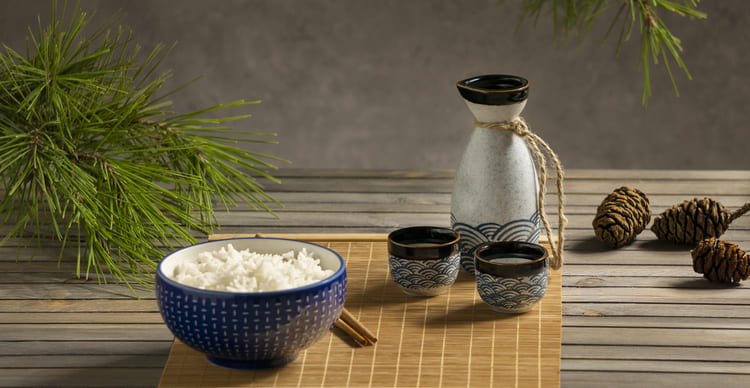Drinking sake is an experience, a journey of flavours that perfectly complements the delicious world of izakaya dining.
While beer and whiskey are often the go-to choices for many Malaysians when enjoying Japanese food, sake offers a whole new level of taste harmony that enhances the umami, richness, and subtle flavours of izakaya dishes.
If you’ve ever wondered how to drink sake properly or how to pair it with your favourite Japanese bites, you’re in for a treat! Sake opens up endless possibilities for food pairing. And the best part? You don’t have to be a sake expert to enjoy it!
In this guide, we’ll take you through the basics of sake, its benefits, food pairing principles, and must-try combinations with izakaya delicacies—all to help you savour sake like a pro right here in Malaysia.
Key Takeaways
- Sake is a traditional Japanese rice wine brewed through fermentation, offering a smooth, umami-rich taste enjoyed warm, chilled, or at room temperature.
- Sake enhances umami flavours, balances acidity and sweetness, and cleanses the palate for a richer dining experience.
- Different sake types, from full-bodied Junmai to fruity Daiginjo and creamy Nigori, offer unique flavours suited for various food pairings.
- Pair sake based on flavour harmony, contrast, weight balance, and temperature to enhance the drink and the dish.
- Traditional pairings include Junmai with grilled yakitori, Daiginjo with sashimi, and Nigori with spicy dishes, which provide a perfect balance.
- New combinations like sparkling sake with truffle fries or aged Koshu sake with Wagyu beef bring an exciting twist to sake enjoyment.
- For an authentic and enjoyable experience, savour sake slowly, choose the right temperature, use proper glassware, and follow Japanese etiquette..
What is Sake? A Taste of Japan’s Finest Rice Wine
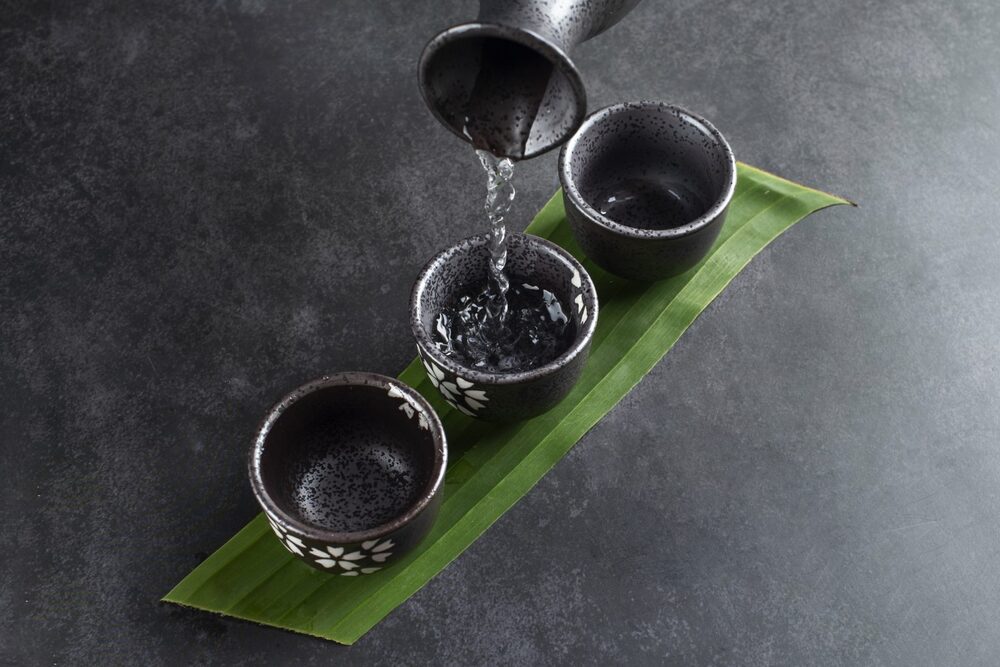
Sake (pronounced “sah-keh”) is Japan’s traditional rice wine, crafted through a delicate brewing process that has been perfected over centuries.
Unlike grape wine or beer, sake is brewed using rice, water, yeast, and koji mold, resulting in a smooth, umami-rich drink that can be enjoyed in various ways—chilled, warm, or at room temperature—depending on the type and occasion.
How is Japanese Sake Made?
The sake brewing process is closer to beer than wine, as it involves fermentation rather than direct fermentation from fruit sugars. Here’s a simplified breakdown:
- Polishing the Rice – The outer layers of rice grains are milled away, affecting the sake’s clarity and taste.
- Washing & Steaming – The polished rice is washed, soaked, and steamed to prepare for fermentation.
- Koji Mold Addition – A special mould called koji is introduced to break down starch into fermentable sugars.
- Yeast Fermentation – Yeast is added, converting sugars into alcohol and developing sake’s unique flavours.
- Pressing & Filtering – Once fermented, the mixture is pressed, filtered, and sometimes aged before bottling.
What Makes Sake Unique?
Sake stands out from other alcoholic beverages due to its smooth texture, balanced flavours, and versatility.
Its umami-rich profile makes it an excellent pairing for a wide range of Japanese dishes, enhancing flavours in ways no other drink can.
- Higher Alcohol Content – Sake typically contains 14 – 16% alcohol, making it stronger than beer but lighter than whiskey or hard liquor.
- Smooth & Balanced – Unlike strong spirits, sake lacks harshness, offering a clean, refined drinking experience.
- Versatile Serving Styles – Sake can be enjoyed cold, warm, or hot, allowing different temperatures to highlight distinct flavours.
- No Need for Aging – Most sake is meant to be consumed fresh within a year of bottling for optimal taste.
Sake vs Wine vs Beer: What’s the Difference?
Sake, wine, and beer may all be fermented beverages but differ in ingredients, fermentation process, and taste.
| Factor | Sake | Wine | Beer |
| Main Ingredient | Rice | Grapes | Barley/Wheat |
| Fermentation Process | Multiple parallel fermentation | Single fermentation | Malting & brewing |
| Alcohol Content | 14 – 16% | 11 – 15 % | 4 – 6% |
| Ageing | Best consumed fresh | Improves with age | Consumed fresh |
| Serving Style | Warm, room temp or chilled | Typically chilled | Cold |
7 Benefits of Pairing Japanese Sake with Izakaya Dishes
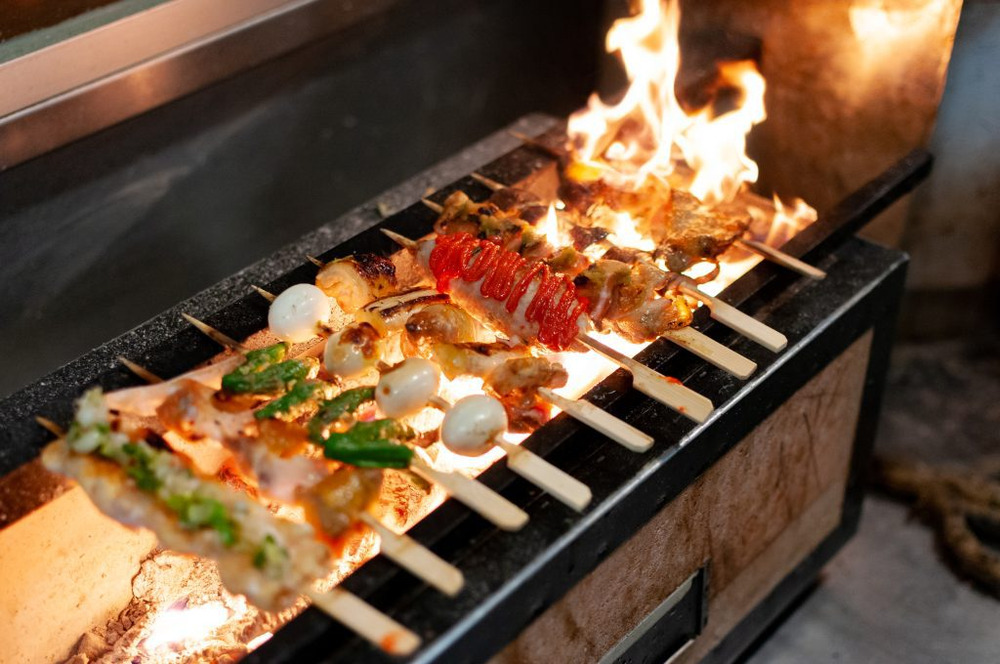
Pairing sake with izakaya dishes enhances flavours, balances textures, and elevates your dining experience.
Sake’s smooth, umami-rich profile makes it the perfect companion for a variety of Japanese dishes, allowing flavours to harmonise without overpowering each other.
Here’s why sake and izakaya dishes are a match made in culinary heaven:
1. Enhances Umami Flavours
Sake contains naturally occurring amino acids that enhance umami, the savoury taste found in many Japanese dishes, such as sashimi, miso soup, and grilled meats.
This deepens the flavours and creates a richer, more satisfying bite.
2. Balances Acidity and Sweetness
Certain izakaya dishes have strong acidic or salty elements like soy sauce-glazed yakitori or citrus-infused seafood.
The mild sweetness of sake helps balance these flavours, preventing them from becoming too overwhelming.
3. Cleanses the Palate
Sake has a light, smooth texture that acts as a natural palate cleanser, refreshing your taste buds between bites.
This makes it an excellent choice when enjoying rich sauces, deep-fried textures, or strong umami flavours.
4. Reduces Oiliness in Fried Dishes
Deep-fried favourites like tempura, karaage (Japanese fried chicken), and takoyaki can feel heavy over time.
Crisp, dry sakes cut through the oiliness, leaving your mouth clean and refreshed, making each bite as enjoyable as the first.
5. Elevates Aromas and Delicate Flavours
Premium sakes like Daiginjo and Ginjo have fruity, floral aromas that can enhance the delicate notes of fresh seafood, truffle-infused dishes, and sushi.
This subtle pairing brings out the natural flavours without overshadowing them.
6. Smooth Alcohol Profile for a More Enjoyable Drink
Unlike beer’s bitterness or whiskey’s harshness, sake’s gentle alcohol content (14-16%) ensures a smooth, easy-drinking experience.
Whether you’re sipping cold sake with light dishes or warm sake with grilled meats, the result is a balanced and enjoyable pairing.
7. Complements a Wide Range of Izakaya Dishes
Sake is incredibly versatile—it pairs well with everything from grilled skewers to seafood, fried snacks, and spicy dishes.
With different sake types catering to different flavours, there’s always a perfect sake for your favourite izakaya dish.
With Japanese cuisine becoming increasingly popular in Malaysia, exploring sake and izakaya pairings can enhance your dining experience.
Understanding Japanese Sake Varieties: Which Sake Pairs Best with Your Meal?
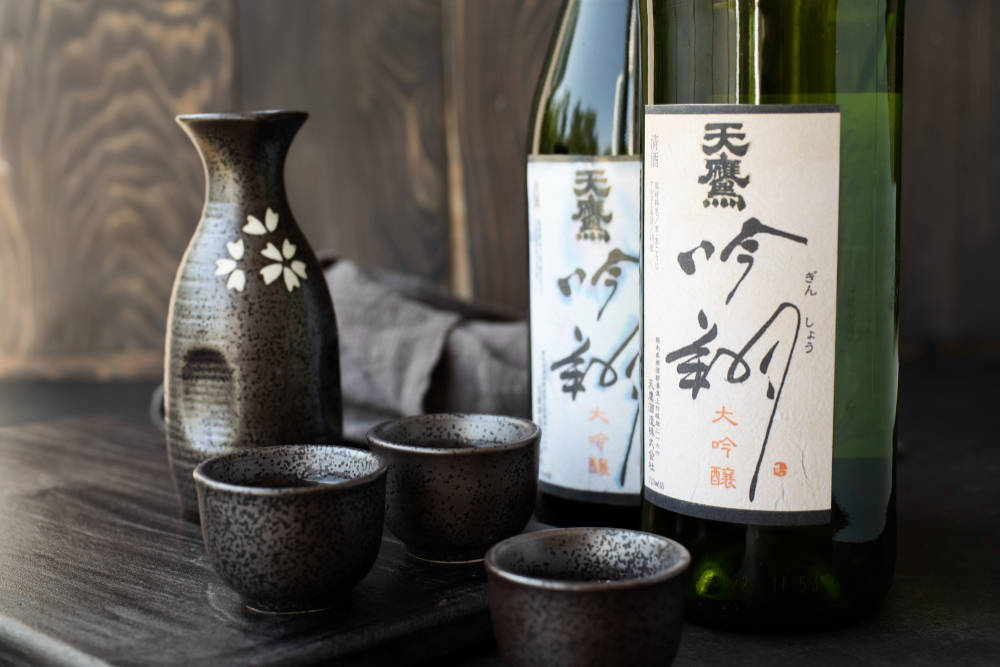
Not all sakes are the same! Just like wine has red, white, and sparkling varieties, sake comes in different styles, each with its unique flavour profile, aroma, and ideal food pairing.
Understanding sake varieties will help you find the perfect match for your favourite izakaya dishes.
1. Junmai – Full-Bodied & Umami-Rich
- Flavour Profile: Deep umami, rich, slightly acidic.
- Best Served: Warm or at room temperature.
- Food Pairings: Grilled meats (yakitori, teriyaki chicken), miso-based dishes, sushi with fatty fish.
- Why It Works: Junmai’s bold flavours complement rich, umami-packed dishes, making it a go-to choice for hearty izakaya meals.
2. Ginjo & Daiginjo – Light, Floral & Aromatic
- Flavour Profile: Fruity, floral, smooth, slightly sweet.
- Best Served: Chilled.
- Food Pairings: Sashimi, light tempura, edamame, delicate seafood dishes.
- Why It Works: The delicate, refined nature of Ginjo & Daiginjo enhances the freshness of raw fish without overpowering it.
3. Honjozo – Light, Crisp & Refreshing
- Flavour Profile: Smooth, dry, slightly fragrant.
- Best Served: Warm or chilled.
- Food Pairings: Grilled seafood, soy-based dishes, takoyaki, yakitori.
- Why It Works: Honjozo’s balanced acidity and dryness cut through rich, grilled flavours, making it an excellent all-rounder sake.
4. Nigori – Sweet, Creamy & Unfiltered
- Flavour Profile: Slightly sweet, cloudy, creamy texture.
- Best Served: Chilled.
- Food Pairings: Spicy dishes (karaage with chilli sauce, spicy tuna rolls), desserts.
- Why It Works: Nigori’s natural sweetness softens spicy flavours, creating a refreshing contrast that cools the heat.
5. Sparkling Sake – Effervescent & Refreshing
- Flavour Profile: Light, slightly sweet, bubbly.
- Best Served: Chilled.
- Food Pairings: Fried foods (tempura, chicken karaage, ebi mayo), cheese-based dishes.
- Why It Works: The bubbles help cleanse the palate, balancing the richness of fried foods and keeping every bite enjoyable.
Which Sake Should You Try First?
For those new to sake, start with a Ginjo or Daiginjo for a light, fruity experience.
Junmai or Honjozo will be your best bet if you love grilled meats or bold flavours.
Try Nigori with spicy dishes or Sparkling Sake with fried delicacies for an adventurous twist.
With so many varieties to explore, sake offers endless pairing possibilities for your next izakaya dining experience in Malaysia.
Ready to elevate your dining experience? Discover the art of sake pairing at the best bars and authentic Japanese restaurants in KL—sip, savour, and explore the perfect match for your favorite izakaya dishes today.
How to Match Japanese Sake with Izakaya Dishes
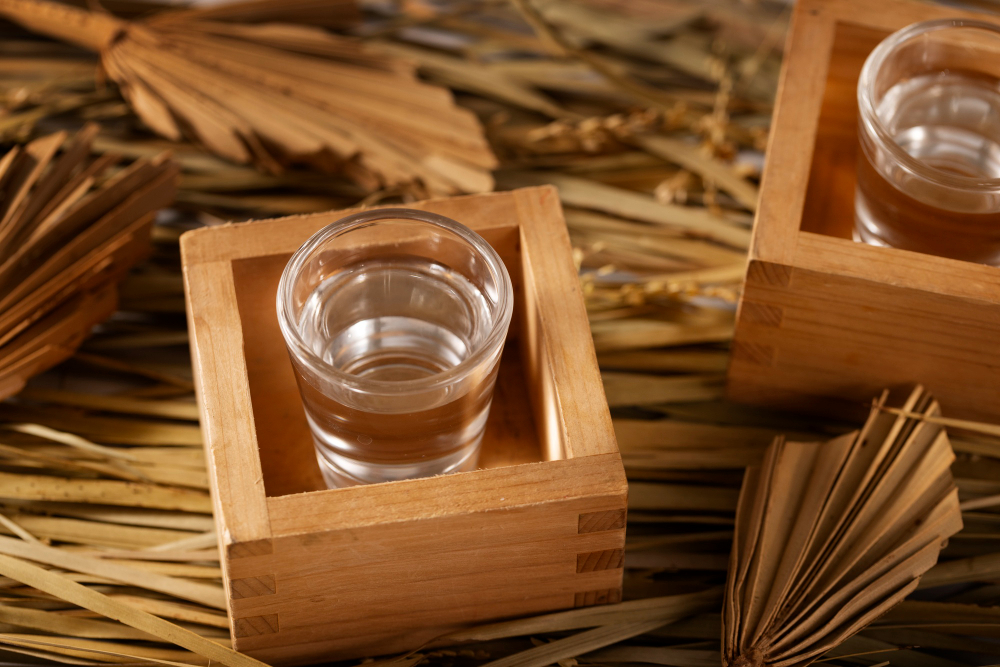
Pairing sake with food is an art and a science.
To truly appreciate the beauty of sake pairing, it’s important to understand how different elements work together to enhance your dining experience.
Here are the key principles to consider when pairing sake with izakaya delicacies:
1. Flavour Matching (Harmonisation)
Just like red wine pairs well with red meat due to its shared boldness, sake can be paired with dishes that match its flavour characteristics.
This ensures that the drink and dish complement each other rather than compete for attention.
When selecting a sake, consider the primary taste of the dish—whether it is sweet, salty, sour, or umami-rich—and choose a sake with similar characteristics.
2. Contrast Pairing
Sometimes, the best food and drink combinations happen when two contrasting flavours balance each other.
This prevents one from overwhelming the other, leading to a more enjoyable dining experience.
Pairing contrasting flavours adds depth and excitement to your meal, making it more dynamic and enjoyable.
3. Weight Balance
A fundamental principle in sake pairing is matching the weight and intensity of the dish with the sake’s body.
Light, delicate dishes should be paired with subtle, elegant sakes, while richer, heavier dishes require full-bodied sakes to withstand their intensity.
If the sake is too light for a heavy dish, its flavours might get lost. Similarly, if the sake is too bold for a delicate dish, it can overwhelm the food. Balance is key!
4. Regional Pairing
In Japan, “what grows together, goes together” is often said.
Many traditional sake breweries produce sakes that pair naturally with local cuisine, making regional pairings an easy and authentic way to enjoy sake.
By choosing sake and food from the same region, you can experience flavours enjoyed together for centuries, giving you a taste of Japan’s local dining culture.
5. Temperature Pairing
Sake is unique because it can be enjoyed at different temperatures, from warm and cosy to chilled and refreshing.
The temperature at which sake is served can enhance or alter its flavour profile, so it’s important to choose the right temperature for the dish you’re eating.
Warm sake enhances savoury and earthy flavours, while chilled sake highlights fruity and floral notes preserved in cool temperatures.
By experimenting with different sake temperatures, you can customise your sake-drinking experience to match the dish and your preference.
5 Classic Sake and Izakaya Pairings

Pairing sake with izakaya dishes is a time-honoured tradition in Japan.
Just like how red wine pairs with steak and white wine complements seafood, different types of sake enhance the flavours of various Japanese dishes, creating a balanced and memorable dining experience.
Here are five classic sake and izakaya pairings you should try the next time you visit an izakaya in Malaysia.
1. Junmai Sake + Sashimi & Miso Soup
Junmai sake is full-bodied, rich, and packed with umami, making it a perfect match for sashimi and miso-based dishes.
The natural acidity and depth of Junmai enhance the umami flavours of raw fish like tuna, salmon, and yellowtail.
When paired with miso soup, Junmai sake complements the fermented soybean flavours, creating a warm and satisfying taste.
Recommended Pairings: Tuna sashimi, salmon sashimi, miso soup, and seaweed salad
Best Serving Temperature: Warm or room temperature (to bring out deeper umami notes).
2. Daiginjo Sake + Tempura
Daiginjo sake is light, floral, and fruity, making it an excellent contrast to tempura’s crispy, golden batter.
The delicate sweetness of Daiginjo balances the mild saltiness of the tempura dipping sauce (tentsuyu).
Since tempura is deep-fried, the smooth, chilled texture of Daiginjo cleanses the palate between bites, preventing the dish from feeling too oily.
Recommended Pairings: Shrimp tempura, vegetable tempura, and kakiage (mixed tempura fritters)
Best Serving Temperature: Chilled (to highlight its delicate and refreshing notes).
3. Honjozo Sake + Yakitori (Grilled Skewers)
Honjozo sake has a light, crisp, and slightly dry flavour, which makes it an ideal match for smoky, grilled meats like yakitori.
The mild alcohol content and dry finish of Honjozo cuts through the fatty, charred flavours of skewered chicken.
The balance between the sweetness of the tare sauce (soy-based glaze) and the dryness of Honjozo sake enhances the overall experience.
Recommended Pairings: Chicken yakitori (tare or shio), tsukune (chicken meatballs), and grilled asparagus or shiitake mushrooms
Best Serving Temperature: Warm or slightly chilled (to complement the grilled flavours).
4. Nigori Sake + Spicy Karaage (Japanese Fried Chicken)
Nigori sake is creamy, sweet, and slightly cloudy, perfectly contrasting with spicy and deep-fried dishes.
The natural sweetness of Nigori helps balance spicy seasonings like chilli powder, togarashi, or spicy mayo.
The thicker texture of Nigori sake coats the palate, toning down the heat from spicy foods and creating a smooth, enjoyable finish.
Recommended Pairings: Spicy karaage (Japanese fried chicken), spicy tuna rolls, and chilli-glazed chicken wings
Best Serving Temperature: Chilled (to enhance its refreshing, cooling effect).
5. Futsu-shu (Table Sake) + Takoyaki
Futsu-shu (regular table sake) is an everyday drink with a balanced and smooth taste, making it versatile for casual izakaya dishes.
The savoury, slightly sweet takoyaki batter (octopus balls) pairs well with the mild, slightly dry finish of Futsu-shu sake.
The simple, easy-drinking nature of Futsu-shu makes it a great all-rounder sake for social dining.
Recommended Pairings: Takoyaki (octopus balls), okonomiyaki (savoury Japanese pancakes), and gyoza (dumplings)
Best Serving Temperature: Room temperature or warm (to enhance smoothness).
Which Classic Pairing Should You Try First?
If you’re new to sake pairing, start with a light Daiginjo sake with tempura or a bold Junmai sake with sashimi for an easy and delicious introduction.
If you love grilled skewers or fried dishes, opt for Honjozo with yakitori or Nigori with spicy fried chicken for a more adventurous combination.
By exploring these classic sake and izakaya pairings, you’ll unlock a whole new way to enjoy Japanese food and appreciate the delicate balance of flavours that make sake one of the most versatile and exciting drinks.
So, the next time you’re dining at an izakaya in Malaysia, experiment with sake pairings and discover your perfect match.
Ready to explore the best of Japanese cuisine? Discover the must-have dishes at izakayas, including mouthwatering Japanese meat dishes, and elevate your dining experience today!
5 Modern Sake and Izakaya Pairings

While classic sake pairings have been perfected over centuries, modern dining trends have introduced new and exciting ways to enjoy sake.
With fusion flavours, contemporary cooking techniques, and global influences, modern sake pairings go beyond traditional Japanese cuisine, offering unique and unexpected combinations that elevate the drinking experience.
Try five modern sake and izakaya pairings that add a fresh twist to your dining experience:
1. Sparkling Sake + Truffle Fries
Sparkling sake is light, slightly sweet, and effervescent, making it a refreshing contrast to rich and crispy dishes like truffle fries.
The bubbles cleanse the palate, preventing the truffle oil from feeling overwhelming.
The mild sweetness of sparkling sake enhances the earthy, umami-rich truffle aroma for a luxurious bite.
Alternative Pairings: French fries with seaweed seasoning and truffle mac & cheese
Best Serving Temperature: Chilled (to maintain its crisp, refreshing character).
2. Nigori Sake + Spicy Tuna Rolls
Nigori sake is sweet, creamy, and slightly cloudy, creating a perfect balance for spicy dishes.
The natural sweetness of Nigori sake tones down the heat from spicy tuna rolls, allowing the flavours to shine without overpowering the palate.
The thicker texture of Nigori sake adds a smooth, velvety contrast to the bold, spicy flavours of wasabi and chilli-infused sauces.
Alternative Pairings: Spicy salmon poke bowls and spicy Korean-style fried chicken
Best Serving Temperature: Chilled (to enhance its cooling effect).
3. Aged Koshu Sake + Wagyu Beef
Koshu sake (aged sake) has a deep, complex flavour with nutty, caramel, and smoky notes, making it a perfect match for premium Wagyu beef.
The richness of Wagyu pairs beautifully with Koshu’s aged umami depth, similar to how aged whiskey pairs with steak.
The slight oxidation in Koshu sake adds a luxurious, full-bodied mouthfeel, complementing the fatty marbling of Wagyu.
Best Serving Temperature: Room temperature or slightly warm (to enhance its mature, nutty aroma).
Alternative Pairings: Smoked duck breast and slow-cooked short ribs
4. Daiginjo Sake + Avocado Sushi Rolls
Daiginjo sake is floral, fruity, and smooth, making it a light and elegant pairing for avocado-based sushi rolls.
The creaminess of avocado complements the delicate texture of Daiginjo, creating a silky-smooth mouthfeel.
The slight sweetness and acidity in Daiginjo sake enhance the freshness of sushi while keeping the flavours balanced.
Alternative Pairings: California rolls and vegetarian sushi with cream cheese
Best Serving Temperature: Chilled (to highlight its aromatic notes).
5. Dry Sake + Cheese Platter
Dry sake (like Honjozo or Karakuchi styles) has crisp acidity and a clean finish, making it a surprisingly great pairing for cheeses.
The umami-rich components in aged cheeses blend well with the delicate sweetness of sake, much like a white wine pairing.
The acidity in dry sake balances the creaminess of soft cheeses and enhances the nutty notes of aged cheeses.
Best Serving Temperature: Chilled or room temperature (depending on the cheese type).
Recommended Cheese Pairings: Brie or Camembert with Ginjo sake, aged cheddar or Gouda with Junmai sake, and Blue cheese with sweet Nigori sake
Looking for the best Japanese restaurant in Malaysia? Let us guide you on how to choose a Japanese restaurant for authentic flavours, top-quality sake, and an unforgettable dining experience.
4 Tips for Enjoying Sake: How to Drink Sake the Right Way
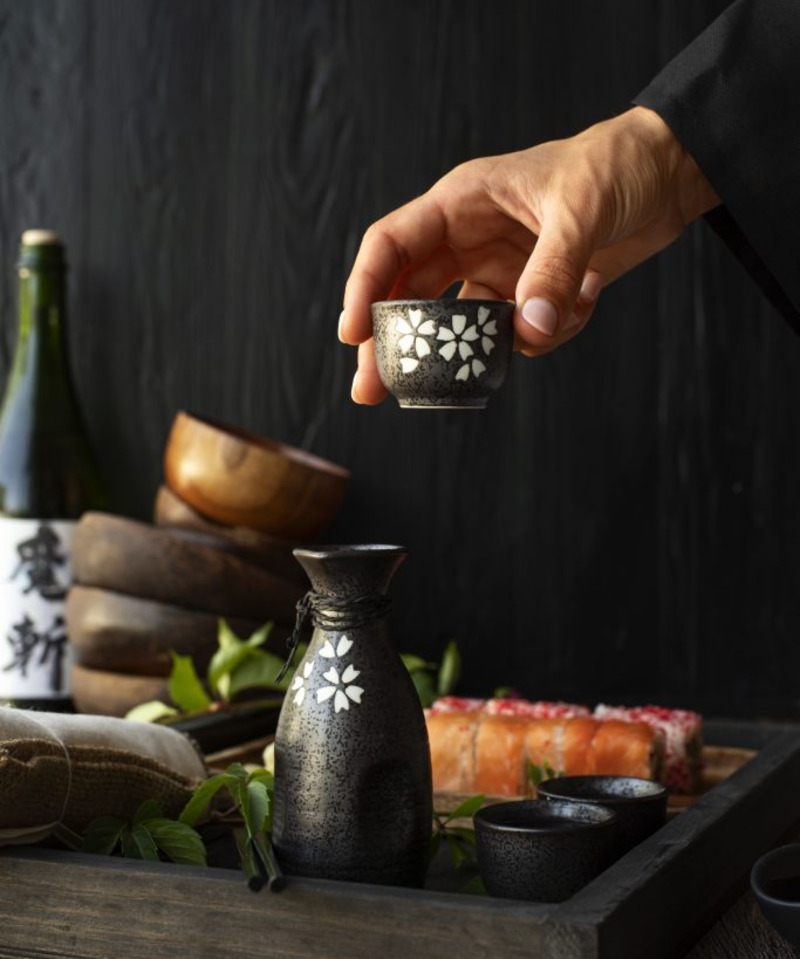
Knowing how to enjoy sake properly can enhance its flavours and complement your izakaya dining experience.
Use these four essential tips to drink sake like a pro.
1. Experiment with Temperatures for the Best Flavour Experience
One of the unique aspects of sake is that it can be enjoyed warm, chilled, or at room temperature, with each serving style bringing out different flavour notes.
| Sake Temperature | Best Sake Types | Ideal Food Pairings | Why It Works |
| Warm Sake (50-55°C) | Junmai, Honjozo | Grilled meats, miso-based dishes, hearty stews | Enhances umami flavours, making the sake feel fuller and richer. |
| Chilled Sake (5-10°C) | Ginjo, Daiginjo, Nigori, Sparkling Sake | Sashimi, tempura, sushi, light appetisers | Preserves fruity and floral notes, creating a smooth and crisp drinking experience. |
| Room Temperature Sake | Futsu-shu, Junmai, Aged Koshu | Takoyaki, izakaya-style skewers, everyday dishes | Balances aroma and flavour, making it versatile for various dishes. |
2. Choose the Right Glassware for the Best Aroma & Taste
The type of vessel you drink sake from impacts the aroma, texture, and overall experience.
- Ochoko (Small Ceramic Cup) – Best for warm sake, as the small size helps retain heat.
- Masu (Square Wooden Cup) – Traditionally used for ceremonial occasions, adding a light woody aroma to the sake.
- Wine Glass – Best for Ginjo and Daiginjo sake, as it enhances fruity and floral aromas similar to wine.
- Stemless Glass or Tumbler – A great all-purpose option for most sakes, allowing for a balanced drinking experience.
Pro Tip: If you’re drinking a premium sake like Daiginjo, opt for a wine glass to enjoy its fragrance and delicate flavours.
3. Follow Sake Etiquette for an Authentic Experience
Drinking sake is about the culture and tradition behind it.
- Pour for Others First – It is a Japanese custom to serve sake to your friends before pouring for yourself.
- Use Two Hands When Receiving Sake – Holding the cup with both hands when someone serves you is a sign of respect.
- Sip, Don’t Gulp – Unlike beer or shots, sake is meant to be sipped slowly, allowing the flavours to develop.
- Never Mix Sake with Other Alcohols – To fully appreciate the sake’s taste, avoid mixing it with beer, whiskey, or cocktails during the same meal.
4. Store Your Sake Properly to Maintain Freshness
Sake doesn’t age like wine, so it’s best enjoyed fresh. Proper storage helps preserve its flavour and aroma.
- Keep it in a cool, dark place – Direct sunlight and heat can affect the taste.
- Refrigerate premium sake – Ginjo, Daiginjo, and sparkling sake should be kept chilled for the best flavour.
- Consume opened sake within 3-5 days – Once opened, sake starts losing its freshness, so drink it sooner rather than later.
Discover the Exquisite Sake Malaysia Offerings at Izakaya Group’s Restaurants

Izakaya Group delivers an authentic Japanese dining experience right here in Malaysia.
A significant part of this experience is our curated selection of premium Japanese sakes, meticulously chosen to complement our diverse menu of izakaya delicacies.
A Diverse Selection of Premium Sakes
Our beverage menu features a wide array of sakes, each selected to enhance the flavours of our dishes:
- Traditional Sakes: Experience the rich and nuanced flavours of our Junmai and Honjozo sakes, known for their full-bodied taste and umami richness.
- Premium Ginjo and Daiginjo Sakes: Savour the delicate, fruity, and floral notes of our Ginjo and Daiginjo selections, offering a refined and smooth drinking experience.
- Nigori Sake: For those who prefer a sweeter palate, our Nigori sake provides a creamy texture and a hint of natural sweetness, pairing wonderfully with spicy or fried dishes.
- Sparkling Sake: Celebrate special moments with our effervescent sparkling sake, offering a refreshing and light option that complements a variety of appetisers and light fare.
Perfect Pairings with Izakaya Delicacies
Our knowledgeable staff is always ready to recommend the ideal sake pairing to elevate your meal.
Whether you’re indulging in our signature yakitori, fresh sashimi, or grilled seafood, there’s a perfect sake to enhance the flavours and provide a harmonious dining experience.
Experience Authentic Japanese Hospitality
Beyond our exceptional sake offerings, Izakaya Group is dedicated to providing an atmosphere that transports you straight to the heart of Japan.
With cosy, intimate spaces, traditional décor, and ambient music, we ensure every visit is a memorable journey into Japanese culture and cuisine.
Enjoy perfectly grilled yakitori in Petaling Jaya, savour the best yakitori in Hartamas, or unwind at our lively yakitori bar in KL for a true izakaya dining experience.
Want to explore the best Japanese alcohol deals? Check out Izakaya Group’s latest promotions on sake, shochu, and more at our bars and restaurants in Malaysia.
Conclusion
Sake is an essential part of Japanese dining culture that enhances the flavours of izakaya dishes, bringing out their umami depth, balancing rich textures, and creating a more immersive culinary experience.
No matter your preference—be it a full-bodied Junmai with grilled yakitori, a delicate Daiginjo with fresh sashimi, or a creamy Nigori to cool down spicy dishes—the right sake pairing elevates every bite.
At Izakaya Group, we invite you to discover the art of sake pairing at our bars and restaurants in Malaysia.
With a carefully curated selection of premium Japanese sakes, an authentic izakaya atmosphere, and expertly Japanese izakaya dishes, every visit promises an unforgettable dining experience.
Experience authentic flavours at the best Japanese restaurant in Malaysia! Book your table now and indulge in expertly paired sake and izakaya delights.

